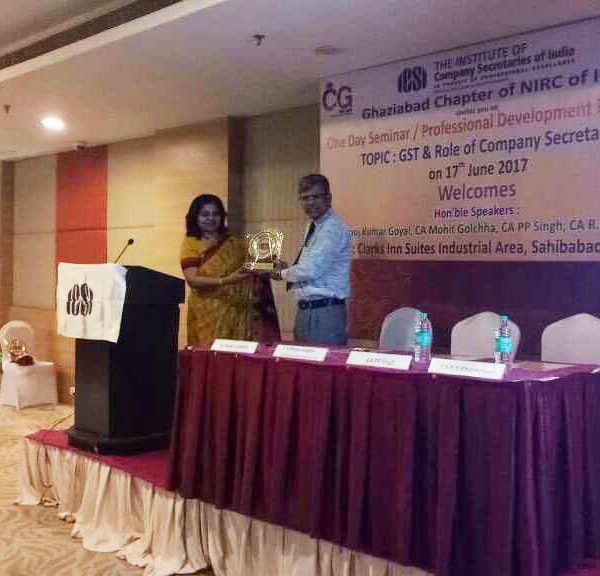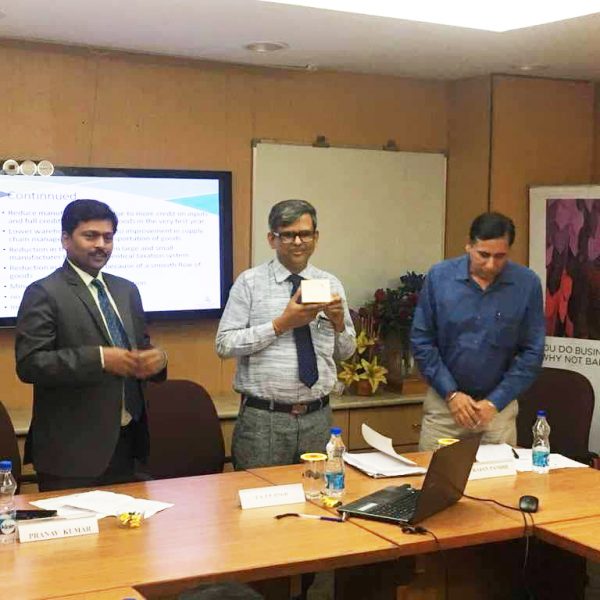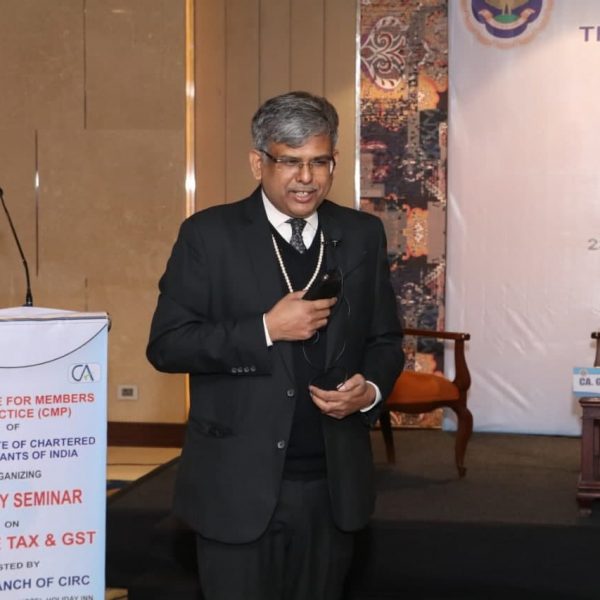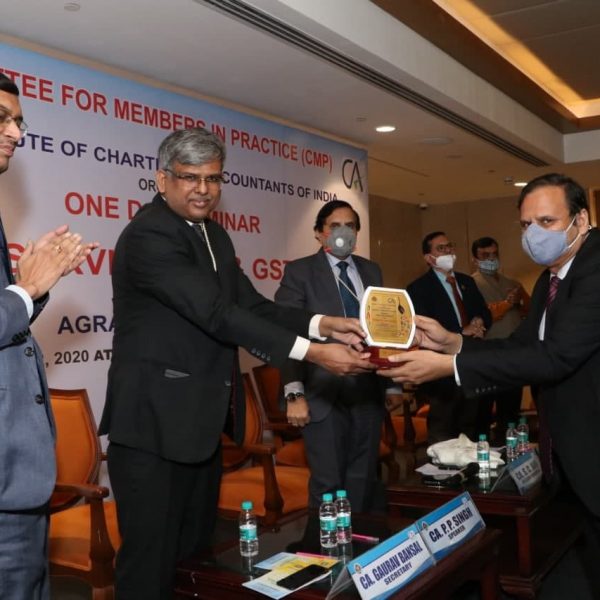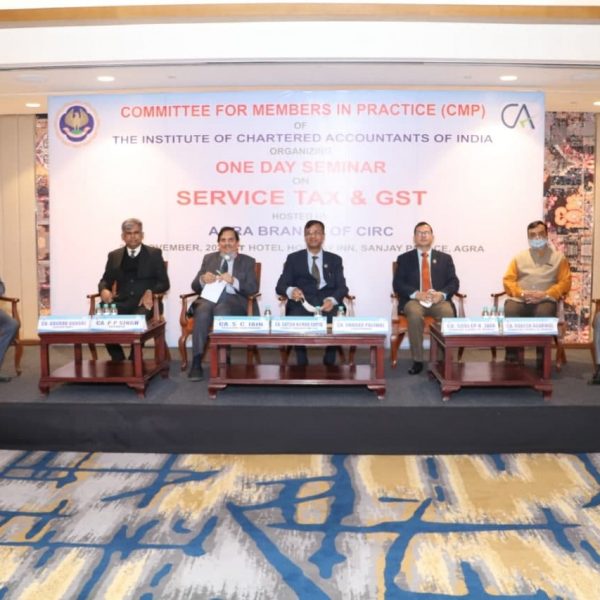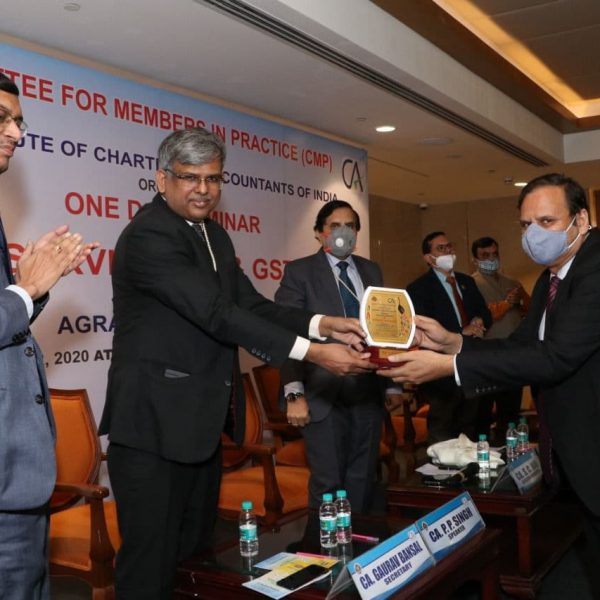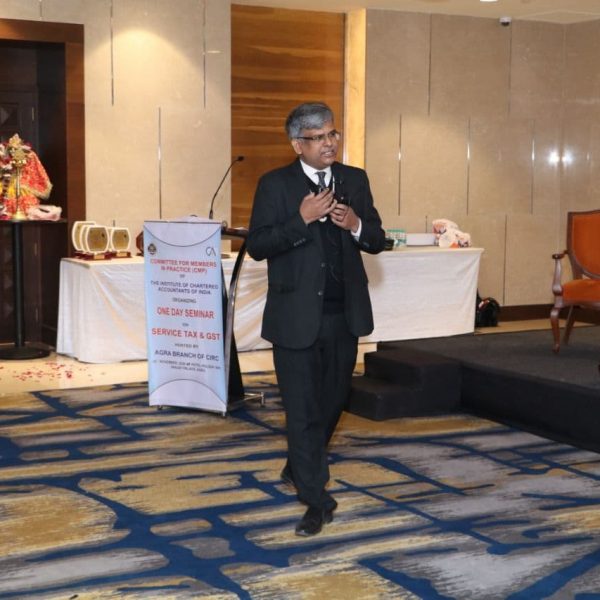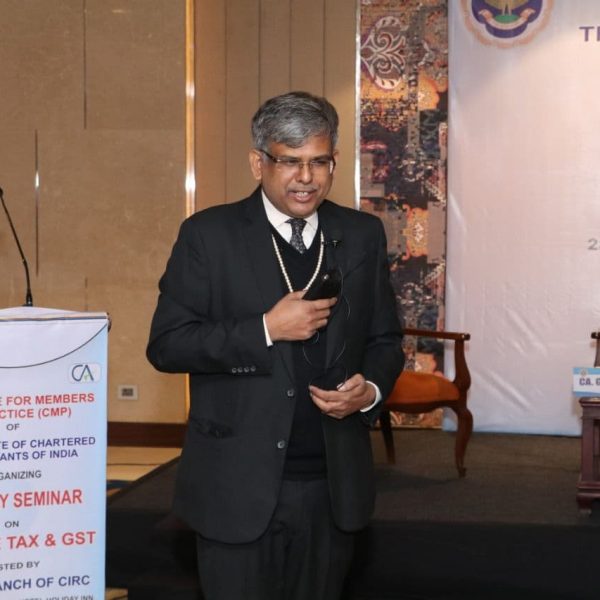Rate of income tax for AY 2021-22
1.General rate of tax as per Finance Act- Part I of the First Schedule of the finance act 2021
- 2. net agriculture income exceeding ₹ 5000/- chapter II of the finance act 2021
- 3. special rate in certain cases- specific chapter/section and chapter II of the finance act 2021
General rate of tax as per Finance Act- Part I of the First Schedule of the finance act 2021
THE FIRST SCHEDULE
(See section 2)
PART I INCOME-TAX Paragraph A
Rate of tax for Individual or HUF or AOP or BOI every artificial juridical person :
(I) In the case of every individual other than the individual referred to in items (II) ( senior citizen age above 60 years but less than 80 years) and (III) (covering age above 80 years )of this Paragraph or Hindu undivided family or association of persons or body of individuals, whether incorporated or not, or every artificial juridical person referred to in sub-clause (vii) of clause (31) of section 2 of the Income-tax Act, not being a case to which any other Paragraph of this Part applies,—
Rates of income-tax
| 1 | where the total income does not exceed Rs. 2,50,000 | Nil |
| 2 | where the total income exceeds Rs. 2,50,000 but does not exceed Rs. 5,00,000 | 5 % of the amount by which the total income exceeds Rs. 2,50,000;
|
| 3 | where the total income exceeds Rs. 5,00,000 but does not exceed Rs. 10,00,000 | Rs.12,500 plus 20 % of the amount by which the total income exceeds Rs. 5,00,000; |
| 4 | where the total income exceeds Rs. 10,00,000 | Rs. 1,12,500 plus 30 % of the amount by which the total income exceeds Rs.10,00,000. |
Rebate available to resident individual from tax under section 87A:
(II) In the case of every individual, being a resident in India, who is of the age of sixty years or more but less than 80 years at any time during the previous year,—
Rates of income-tax
| 1 | where the total income does not exceed Rs. 3,00,000 | Nil |
| 2 | where the total income exceeds Rs. 3,00,000 but does not exceed Rs. 5,00,000 | 5 % of the amount by which the total income exceeds Rs. 3,00,000; |
| 3 | where the total income exceeds Rs. 5,00,000 but does not exceed Rs. 10,00,000 | Rs.10,000 plus 20 per cent. of the amount by which the total income exceeds Rs. 5,00,000; |
| 4 | where the total income exceeds Rs. 10,00,000 | Rs. 1,10,000 plus 30 per cent. of the amount by which the total income exceeds Rs.10,00,000. |
(III) In the case of every individual, being a resident in India, who is of the age of eighty years or more at any time during the previous year,—
Rates of income-tax
| 1 | where the total income does not exceed Rs. 5,00,000 | Nil |
| 2 | where the total income exceeds Rs. 5,00,000 but does not exceed Rs. 10,00,000 | 20 per cent. of the amount by which the total income exceeds Rs. 5,00,000; |
| 3 | where the total income exceeds Rs. 10,00,000 | Rs. 1,00,000 plus 30 per cent. of the amount by which the total income exceeds Rs. 10,00,000. |
Note: New section 115BAC has been inserted by finance act 2020 w e. f AY 2021-22 where under less tax but without deductions so need to compute tax by both the method and if tax is less while opting this section it may be opted in ITR filing and tax can saved.
Tax slab under section 115BAC as under :
| Sl. No. | Total income | Rate of tax |
| (1) | (2) | (3) |
| 1. | Upto Rs. 2,50,000 | Nil |
| 2. | From Rs. 2,50,001 to Rs. 5,00,000 | 5 per cent |
| 3. | From Rs. 5,00,001 to Rs. 7,50,000 | 10 per cent |
| 4. | From Rs. 7,50,001 to Rs. 10,00,000 | 15 per cent |
| 5. | From Rs. 10,00,001 to Rs. 12,50,000 | 20 per cent |
| 6. | From Rs. 12,50,001 to Rs. 15,00,000 | 25 per cent |
| 7. | Above Rs. 15,00,000 | 30 per cent: |
Provided that where the person fails to satisfy the conditions contained in sub-section (2) in any previous year, the option shall become invalid in respect of the assessment year relevant to that previous year and other provisions of this Act shall apply, as if the option had not been exercised for the assessment year relevant to that previous year:
Provided further that where the option is exercised under clause (i) of sub-section (5), in the event of failure to satisfy the conditions contained in sub-section (2), it shall become invalid for subsequent assessment years also and other provisions of this Act shall apply for those years accordingly.
(2) For the purposes of sub-section (1), the total income of the individual or Hindu undivided family shall be computed,—
| (i) | without any exemption or deduction under the provisions of clause (5) or clause (13A) or prescribed under clause (14) (other than those as may be prescribed for this purpose) or clause (17) or clause (32), of section 10 or section 10AA or section 16 or clause (b) of section 24 (in respect of the property referred to in sub-section (2) of section 23) or clause (iia) of sub-section (1) of section 32 or section 32AD or section 33AB or section 33ABA or sub-clause (ii) or sub-clause (iia) or sub-clause (iii) of sub-section (1) or sub-section (2AA) of section 35 or section 35AD or section 35CCC or clause (iia) of section 57 or under any of the provisions of Chapter VI-A other than the provisions of sub-section (2) of section 80CCD or section 80JJAA; | |
| (ii) | without set off of any loss,— |
| (a) | carried forward or depreciation from any earlier assessment year, if such loss or depreciation is attributable to any of the deductions referred to in clause (i); | |
| (b) | under the head “Income from house property” with any other head of income; |
| (iii) | by claiming the depreciation, if any, under any provision of section 32, except clause (iia) of sub-section (1) of the said section, determined in such manner as may be prescribed; and | |
| (iv) | without any exemption or deduction for allowances or perquisite, by whatever name called, provided under any other law for the time being in force. |
(3) The loss and depreciation referred to in clause (ii) of sub-section (2) shall be deemed to have been given full effect to and no further deduction for such loss or depreciation shall be allowed for any subsequent year:
Provided that where there is a depreciation allowance in respect of a block of assets which has not been given full effect to prior to the assessment year beginning on the 1st day of April, 2021, corresponding adjustment shall be made to the written down value of such block of assets as on the 1st day of April, 2020 in the prescribed manner, if the option under sub-section (5) is exercised for a previous year relevant to the assessment year beginning on the 1st day of April, 2021.
(4) In case of a person, having a Unit in the International Financial Services Centre, as referred to in sub-section (1A) of section 80LA, which has exercised option under sub-section (5), the conditions contained in sub-section (2) shall be modified to the extent that the deduction under section 80LA shall be available to such Unit subject to fulfilment of the conditions contained in the said section.
Explanation.—For the purposes of this sub-section, the term “Unit” shall have the meaning assigned to it in clause (zc) of section 2 of the Special Economic Zones Act, 2005 (28 of 2005).
(5) Nothing contained in this section shall apply unless option is exercised in the prescribed manner by the person,—
| (i) | having income from business or profession, on or before the due date specified under sub-section (1) of section 139 for furnishing the returns of income for any previous year relevant to the assessment year commencing on or after the 1st day of April, 2021, and such option once exercised shall apply to subsequent assessment years; | |
| (ii) | having income other than the income referred to in clause (i), along with the return of income to be furnished under sub-section (1) of section 139 for a previous year relevant to the assessment year: |
Provided that the option under clause (i), once exercised for any previous year can be withdrawn only once for a previous year other than the year in which it was exercised and thereafter, the person shall never be eligible to exercise option under this section, except where such person ceases to have any income from business or profession in which case, option under clause (ii) shall be available.
Surcharge on income-tax
The amount of income-tax computed in accordance with the preceding provisions of this Paragraph, or the provisions of section 111A or section 112 or section 112A or the provision of section 115BAC of the Income-tax Act, shall be increased by a surcharge for the purposes of the Union, calculated, in the case of every individual or Hindu undivided family or association of persons or body of individuals, whether incorporated or not, or every artificial juridical person referred to in sub-clause (vii) of clause (31) of section 2 of the Income-tax Act,—
(a) having a total income (including the income by way of dividend or income under the provisions of section 111A and section 112A of the Income-tax Act) exceeding ₹50 lakh but not exceeding 1 ₹ crore , @ 10% of such income-tax;
(b) having a total income (including the income by way of dividend or income under the provisions of section 111A and section 112A of the Income-tax Act) exceeding ₹ 1 crore but not exceeding ₹ 2 crore, @ 15% of such income-tax.
(c) having a total income (excluding the income by way of dividend or income under the provisions of section 111A and section 112A of the Income-tax Act) exceeding two crore rupees but not exceeding ₹ 5crore , @25% of such income-tax;
(d) having a total income (excluding the income by way of dividend or income under the provisions of section 111A and section 112A of the Income-tax Act) exceeding ₹ 5crore @ 37% of such income-tax; and
(e) having a total income (including the income by way of dividend or income under the provisions of section 111A and section 112A of the Income-tax Act) exceeding ₹2 crore, but is not covered under clauses (c) and (d), shall be applicable @ 15% of such income-tax:
Provided that in case where the total income includes any income by way of dividend or income chargeable under section 111A and section 112A of the Income-tax Act, the rate of surcharge on the amount of income-tax computed in respect of that part of income shall not exceed 15%
Marginal relief:
Provided further that in the case of persons mentioned above having total income exceeding,—
(a) fifty lakh rupees but not exceeding one crore rupees, the total amount payable as income-tax and surcharge on such income shall not exceed the total amount payable as income-tax on a total income of fifty lakh rupees by more than the amount of income that exceeds fifty lakh rupees;
(b) one crore rupees but does not exceed two crore rupees, the total amount payable as income-tax and surcharge on such income shall not exceed the total amount payable as income-tax and surcharge on a total income of one crore rupees by more than the amount of income that exceeds one crore rupees;
(c) two crore rupees but does not exceed five crore rupees, the total amount payable as income-tax and surcharge on such income shall not exceed the total amount payable as income-tax and surcharge on a total income of two crore rupees by more than the amount of income that exceeds two crore rupees;
(d) five crore rupees, the total amount payable as income-tax and surcharge on such income shall not exceed the total amount payable as income-tax and surcharge on a total income of five crore rupees by more than the amount of income that exceeds five crore rupees.
Paragraph B
In the case of every co-operative society,—
Rates of income-tax
| 1 | where the total income does not exceed Rs.10,000 | 10 % of the total income; |
| 2 | where the total income exceeds Rs.10,000 but does not exceed Rs. 20,000 | Rs.1,000 plus 20 % of the amount by which the total income exceeds Rs. 10,000; |
| 3 | where the total income exceeds Rs. 20,000 | Rs. 3,000 plus 30 % . of the amount by which the total income exceeds Rs. 20,000
|
Surcharge on income-tax
The amount of income-tax computed in accordance with the preceding provisions of this Paragraph, or the provisions of section 111A or section 112 or section 112A of the Income-tax Act, shall, in the case of every co-operative society, having a total income exceeding one crore rupees, be increased by a surcharge for the purposes of the Union calculated @ 12% of such income-tax:
Provided that in the case of every co-operative society mentioned above having total income exceeding one crore rupees, the total amount payable as income-tax and surcharge on such income shall not exceed the total amount payable as income-tax on a total income of one crore rupees by more than the amount of income that exceeds one crore rupees.
Paragraph C
In the case of every firm,—
Rate of income-tax
On the whole of the total income 30 %
Surcharge on income-tax
The amount of income-tax computed in accordance with the preceding provisions of this Paragraph, or the provisions of section 111A or section 112 or section 112A of the Income-tax Act, shall, in the case of every firm, having a total income exceeding one crore rupees, be increased by a surcharge for the purposes of the Union calculated @ 12% of such income-tax:
Marginal relief:
Provided that in the case of every firm mentioned above having total income exceeding ₹1 crore, the total amount payable as income-tax and surcharge on such income shall not exceed the total amount payable as income-tax on a total income of ₹1crore by more than the amount of income that exceeds ₹1crore.
Paragraph D
In the case of every local authority,—
Rate of income-tax
On the whole of the total income 30 %.
Surcharge on income-tax
The amount of income-tax computed in accordance with the preceding provisions of this Paragraph, or the provisions of section 111A or section 112 or section 112A of the Income-tax Act, shall, in the case of every local authority, having a total income exceeding ₹1 crore, be increased by a surcharge for the purposes of the Union calculated @ 12% of such income-tax:
Marginal income:
Provided that in the case of every local authority mentioned above having total income exceeding one crore rupees, the total amount payable as income-tax and surcharge on such income shall not exceed the total amount payable as income-tax on a total income of ₹ 1crore by more than the amount of income that exceeds ₹ 1 crore .
Paragraph E
In the case of a company,—
Rates of income-tax
- In the case of a domestic company,—
(i) Where its total turnover or the gross receipt in the previous year 2018-19 does not exceed ₹ 400 crore; 25 % of the total income;
(ii) Other than that referred to in item (i) 30 % of the total income.
- II. In the case of a company other than a domestic company,—
(i) on so much of the total income as consists of,— 50 %.;
(a) royalties received from Government or an Indian concern in pursuance of an agreement made by it with the Government or the Indian concern after the 31st day of March, 1961 but before the 1st day of April, 1976; or
(b) fees for rendering technical services received from Government or an Indian concern in pursuance of an agreement made by it with the Government or the Indian concern after the 29th day of February, 1964 but before the 1st day of April, 1976, and where such agreement has, in either case, been approved by the Central Government .
(ii) on the balance, if any, of the total income 40 %
Surcharge on income-tax
The amount of income-tax computed in accordance with the preceding provisions of this Paragraph, or the provisions of section 111A or section 112 or 112A of the Income-tax Act, shall, be increased by a surcharge for the purposes of the Union calculated,—
(i) in the case of every domestic company,––
(a) having a total income exceeding ₹ 1crore but not exceeding ₹ 10 crore, @ 7 % of such income-tax; and
(b) having a total income exceeding ten crore rupees, @ 12% of such income-tax;
(ii) in the case of every company other than a domestic company,––
(a) having a total income exceeding ₹ 1crore but not exceeding ₹ 10 crore, @ 2% such income-tax; and
(b) having a total income exceeding ₹ 10 crore, @ 5% of such income-tax:
Provided that in the case of every company having a total income exceeding ₹ 1crore but not exceeding ₹ 10 crore, the total amount payable as income-tax and surcharge on such income shall not exceed the total amount payable as income-tax on a total income of ₹ 1crore by more than the amount of income that exceeds ₹ 1crore:
Marginal relief:
Provided further that in the case of every company having a total income exceeding ₹ 10 crore , the total amount payable as income-tax and surcharge on such income shall not exceed the total amount payable as income-tax and surcharge on a total income of ₹ 10crore by more than the amount of income that exceeds ₹ 10 crore.
Health and education cess.
Health and education cess on income tax, in case of all the above assessee @4% of such income tax and surcharge shall be levied.
Tax on agriculture income
Section 2(2) of the Finance Act 2021
In the cases to which Paragraph A of Part I of the First Schedule applies, where the assessee has, in the previous year, any net agricultural income exceeding ₹ 5000/ in addition to total income, and the total income exceeds ₹ 250,0000/-, then,—
| (a) | the net agricultural income shall be taken into account, in the manner provided in clause (b) [that is to say, as if the net agricultural income were comprised in the total income after the ₹ 250,0000/- of the total income but without being liable to tax], only for the purpose of charging income-tax in respect of the total income; and | |
| (b) | the income-tax chargeable shall be calculated as follows:— |
| (i) | the total income and the net agricultural income shall be aggregated and the amount of income-tax shall be determined in respect of the aggregate income at the rates specified in the said Paragraph A, as if such aggregate income were the total income; |
| (ii) | the net agricultural income shall be increased by a sum of ₹ 250,0000/-, and the amount of income-tax shall be determined in respect of the net agricultural income as so increased at the rates specified in the said Paragraph A, as if the net agricultural income as so increased were the total income; |
| (iii) | the amount of income-tax determined in accordance with sub-clause (i) shall be reduced by the amount of income-tax determined in accordance with sub-clause (ii) and the sum so arrived at shall be the income-tax in respect of the total income: |
| Provided that note: in the case of every individual, being a resident in India, who is of the age of 60 years or more but less than 80 years at any time during the previous year, referred to in item (II) of Paragraph A of Part I of the First Schedule, the provisions of this sub-section shall have effect as if for the words “₹2.50 lakh”, the words “₹3 lakh ” had been substituted:
Provided further that in the case of every individual, being a resident in India, who is of the age of 80 years or more at any time during the previous year, referred to in item (III) of Paragraph A of Part I of the First Schedule, the provisions of this sub-section shall have effect as if for the words “₹2.50 lakh “, the words “₹ 5 lakh “ had been substituted. |
|
Illustration: assessee being individual resident age less 60 years.
| Non agriculture income | ₹ 8 lakh
|
| Net Agriculture income | ₹ 3 lakh
|
| Step-1: Computation of tax on ( agriculture+ non agriculture income) as under: tax on ₹ 11 lakh | ₹ 1,42,500 |
| Step-2: Computation of tax on ( agriculture+ threshold limit of ₹ 2,50,000/-) as under: tax on ₹ 5,50,000/- | ₹ 22,500/-
|
| Step-3: tax at step-1 less tax at step 2 | ₹ 120,000/-
|
Meaning of net agriculture income: as per section 2(13) (c) of Finance Act 2021- means the total amount of agricultural income, from whatever source derived, of that person computed in accordance with the rules contained in Part IV of the First Schedule of Finance act 2021;
PART IV
[See section 2(13)(c)]
RULES FOR COMPUTATION OF NET AGRICULTURAL INCOME
Rule 1.—Agricultural income of the nature referred to in section 2(1A)(a) of the Income-tax Act( which is any rent or revenue derived from land which is situated in India and is used for agricultural purposes )shall be computed as if it were income chargeable to income-tax under that Act under the head “Income from other sources” and the provisions of sections 57 to 59 of that Act shall, so far as may be, apply accordingly:
Provided that sub-section (2) of section 58 shall apply subject to the modification that the reference to section 40A therein shall be construed as not including a reference to sub-sections (3), (3A) and (4) of section 40A.
Rule 2.—Agricultural income of the nature referred to in section 2(1A)(b) (which is income derived from such land from agriculture operation etc.)/ or section 2(1A)(c) of the Income- tax Act [other than income derived from any building required as a dwelling-house by the receiver of the rent or revenue of the cultivator or the receiver of rent-in-kind referred to in the said sub-clause (c)] shall be computed as if it were income chargeable to income-tax under that Act under the head “Profits and gains of business or profession” and the provisions of sections 30, 31, 32, 36, 37, 38, 40, 40A [other than sub-sections (3), (3A) and (4) thereof], 41, 43, 43A, 43B and 43C of the Income-tax Act shall, so far as may be, apply accordingly.
Rule 3.—Agricultural income of the nature referred to in sub- clause (c) of clause (1A) of section 2 of the Income-tax Act, being income derived from any building required as a dwelling-house by the receiver of the rent or revenue or the cultivator or the receiver of rent- in-kind referred to in the said sub-clause (c) shall be computed as if it were income chargeable to income-tax under that Act under the head “Income from house property” and the provisions of sections 23 to 27 of that Act shall, so far as may be, apply accordingly.
Rule 4.—notwithstanding anything contained in any other provisions of these rules, in a case—
(a) where the assessee derives income from sale of tea grown and manufactured by him in India, such income shall be computed in accordance with rule 8 of the Income-tax Rules, 1962, and 60% of such income shall be regarded as the agricultural income of the assessee;
(b) where the assessee derives income from sale of centrifuged latex or cenex or latex based crepes (such as pale latex crepe) or brown crepes (such as estate brown crepe, re-milled crepe, smoked blanket crepe or flat bark crepe) or technically specified block rubbers manufactured or processed by him from rubber plants grown by him in India, such income shall be computed in accordance with rule 7A of the Income-tax Rules, 1962, and 65% of such income shall be regarded as the agricultural income of the assessee;
(c) Where the assessee derives income from sale of coffee grown and manufactured by him in India, such income shall be computed in accordance with rule 7B of the Income-tax Rules,
1962, and 65% or 75%, as the case may be, of such income shall be regarded as the agricultural income of the assessee.
Rule 5.—Where the assessee is a member of an association of persons(AOP) or a BOI body of individuals (other than a Hindu undivided family, a company or a firm) which in the previous year has either no income chargeable to tax under the Income-tax Act or has total income not exceeding the maximum amount not chargeable to tax in the case of an association of persons or a body of individuals (other than a Hindu undivided family, a company or a firm) but has any agricultural income then, the agricultural income or loss of the association or body shall be computed in accordance with these rules and the share of the assessee in the agricultural income or loss so computed shall be regarded as the agricultural income or loss of the assessee.
Rule 6.—Where the result of the computation for the previous year in respect of any source of agricultural income is a loss, such loss shall be set off against the income of the assessee, if any, for that previous year from any other source of agricultural income:
Provided that where the assessee is a member of an association of persons or a body of individuals and the share of the assessee in the agricultural income of the association or body, as the case may be, is a loss, such loss shall not be set off against any income of the assessee from any other source of agricultural income.
Rule 7.—Any sum payable by the assessee on account of any tax levied by the State Government on the agricultural income shall be deducted in computing the agricultural income.
Rule 8.—(1) Where the assessee has, in the previous year relevant to the assessment year commencing on the 1st day of April, 2021, any agricultural income and the net result of the computation of the agricultural income of the assessee for any one or more of the previous years relevant to the assessment years commencing on the 1st day of April, 2013 or the 1st day of April, 2014 or the 1st day of April, 2015 or the 1st day of April, 2016 or the 1st day of April, 2017 or the 1st day of April, 2018 or the 1st day of April, 2019, or the 1st day of April,
2020, is a loss, then, for the purposes of sub-section (2) of section 2 of this Act,––
(i) the loss so computed for the previous year relevant to the assessment year commencing on the 1st day of April, 2013, to the extent, if any, such loss has not been set off against the agricultural income for the previous year relevant to the assessment year commencing on the 1st day of April, 2014 or the 1st day of April, 2015 or the 1st day of April, 2016 or the 1st day of April, 2017 or the 1st day of April, 2018 or the 1st day of April, 2019 or the 1st day of April, 2020,
(ii) the loss so computed for the previous year relevant to the assessment year commencing on the 1st day of April, 2014, to the extent, if any, such loss has not been set off against the agricultural income for the previous year relevant to the assessment year commencing on the 1st day of April, 2015 or the 1st day of April, 2016 or the 1st day of April, 2017 or the 1st day of April, 2018 or the 1st day of April, 2019 or the 1st day of April, 2020,
(iii) the loss so computed for the previous year relevant to the assessment year commencing on the 1st day of April, 2015, to the extent, if any, such loss has not been set off against the agricultural income for the previous year relevant to the assessment year commencing on the 1st day of April, 2016 or the 1st day of April, 2017 or the 1st day of April, 2018 or the 1st day of April, 2019 or the 1st day of April, 2020,
(iv) the loss so computed for the previous year relevant to the assessment year commencing on the 1st day of April, 2016, to the extent, if any, such loss has not been set off against the agricultural income for the previous year relevant to the assessment year commencing on the 1st day of April, 2017 or the 1st day of April, 2018 or the 1st day of April, 2019 or the 1st day of April, 2020,
(v) the loss so computed for the previous year relevant to the assessment year commencing on the 1st day of April, 2017, to the extent, if any, such loss has not been set off against the agricultural income for the previous year relevant to the assessment year commencing on the 1st day of April, 2018 or the 1st day of April, 2019 or the 1st day of April, 2020,
(vi) the loss so computed for the previous year relevant to the assessment year commencing on the 1st day of April, 2018, to the extent, if any, such loss has not been set off against the agricultural income for the previous year relevant to the assessment year commencing on the 1st day of April, 2019 or the 1st day of April,2020,
(vii) the loss so computed for the previous year relevant to the assessment year commencing on the 1st day of April, 2019, to the extent, if any, such loss has not been set off against the agricultural income for the previous year relevant to the assessment year commencing on the 1st day of April, 2020,
(viii) the loss so computed for the previous year relevant to the assessment year commencing on the 1st day of April, 2020,shall be set off against the agricultural income of the assessee for the previous year relevant to the assessment year commencing on the 1st day of April, 2021.
(2) Where the assessee has, in the previous year relevant to the assessment year commencing on the 1st day of April, 2022, or, if by virtue of any provision of the Income-tax Act, income-tax is to be charged in respect of the income of a period other than the previous year, in such other period, any agricultural income and the net result of the computation of the agricultural income of the assessee for any one or more of the previous year’s relevant to the assessment years commencing on the 1st day of April, 2014 or the 1st day of April, 2015 or the 1st day of April, 2016 or the 1st day of April, 2017 or the 1st day of April, 2018 or the 1st day of April, 2019 or the 1st day of April, 2020 or the 1st day of April, 2021, is a loss, then, for the purposes of sub-section (10) of section 2 of this Act,––
(i) the loss so computed for the previous year relevant to the assessment year commencing on the 1st day of April, 2014, to the extent, if any, such loss has not been set off against the agricultural income for the previous year relevant to the assessment year commencing on the 1st day of April, 2015 or the 1st day of April, 2016 or the 1st day of April, 2017 or the 1st day of April, 2018 or the 1st day of April, 2019 or the 1st day of April, 2020 or the 1st day of April, 2021,
(ii) the loss so computed for the previous year relevant to the assessment year commencing on the 1st day of April, 2015, to the extent, if any, such loss has not been set off against the agricultural income for the previous year relevant to the assessment year commencing on the 1st day of April, 2016 or the 1st day of April, 2017 or the 1st day of April, 2018 or the 1st day of April, 2019 or the 1st day of April, 2020 or the 1st day of April, 2021,
(iii) the loss so computed for the previous year relevant to the assessment year commencing on the 1st day of April, 2016, to the extent, if any, such loss has not been set off against the agricultural income for the previous year relevant to the assessment year commencing on the 1st day of April, 2017 or the 1st day of April, 2018 or the 1st day of April, 2019 or the 1st day of April, 2020 or the 1st day of April, 2021,
(iv) the loss so computed for the previous year relevant to the assessment year commencing on the 1st day of April, 2017, to the extent, if any, such loss has not been set off against the agricultural income for the previous year relevant to the assessment year commencing on the 1st day of April, 2018 or the 1st day of April,2019 or the 1st day of April, 2020 or the 1st day of April, 2021,
(v) the loss so computed for the previous year relevant to the assessment year commencing on the 1st day of April, 2018, to the extent, if any, such loss has not been set off against the agricultural income for the previous year relevant to the assessment year commencing on the 1st day of April, 2019 or the 1st day of April,2020 or the 1st day of April, 2021,
(vi) the loss so computed for the previous year relevant to the assessment year commencing on the 1st day of April, 2019, to the extent, if any, such loss has not been set off against the agricultural income for the previous year relevant to the assessment year commencing on the or the 1st day of April, 2020 or the 1st day of April, 2021,
(vii) the loss so computed for the previous year relevant to the assessment year commencing on the 1st day of April, 2020, to the extent, if any, such loss has not been set off against the agricultural income for the previous year relevant to the assessment year commencing on the 1st day of April, 2021,
(viii) the loss so computed for the previous year relevant to the assessment year commencing on the 1st day of April, 2021, shall be set off against the agricultural income of the assessee for the previous year relevant to the assessment year commencing on the 1st day of April, 2022.
(3) Where any person deriving any agricultural income from any source has been succeeded in such capacity by another person, otherwise than by inheritance, nothing in sub-rule (1) or sub-rule (2) shall entitle any person, other than the person incurring the loss, to have it set off under sub-rule (1) or, as the case may be, sub-rule (2).
(4) Notwithstanding anything contained in this rule, no loss which has not been determined by the Assessing Officer under the provisions of these rules or the rules contained in the First Schedule to the Finance Act, 2013 (17 of 2013) or the First Schedule to the Finance (No. 2) Act, 2014 (25 of 2014) or the First Schedule to the Finance Act, 2015 (20 of 2015) or the First Schedule to the Finance Act, 2016 (28 of 2016) or the First Schedule to the Finance Act, 2017 (7 of 2017) or the First Schedule to the Finance act, 2018 ( 13 of 2018) or the First Schedule of the Finance (No. 2) Act, 2019 (23 of 2019) or the First Schedule of the Finance Act, 2020 (12 of 2020) shall be set off under sub-rule (1) or, as the case may be, sub-rule (2).
Rule 9.—Where the net result of the computation made in accordance with these rules is a loss, the loss so computed shall be ignored and the net agricultural income shall be deemed to be nil.
Rule 10.—The provisions of the Income-tax Act relating to procedure for assessment (including the provisions of section 288A relating to rounding off of income) shall, with the necessary modifications, apply in relation to the computation of the net agricultural income of the assessee as they apply in relation to the assessment of the total income.
Rule 11.—For the purposes of computing the net agricultural income of the assessee, the Assessing Officer shall have the same powers as he has under the Income-tax Act for the purposes of assessment of the total income.

